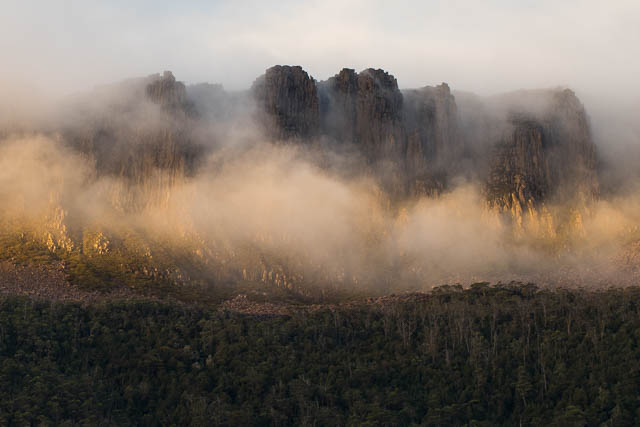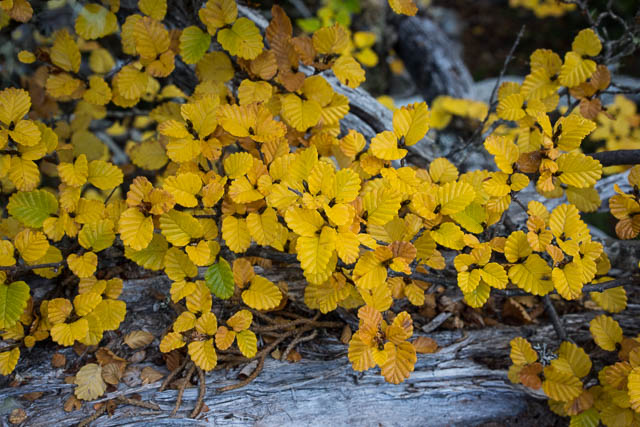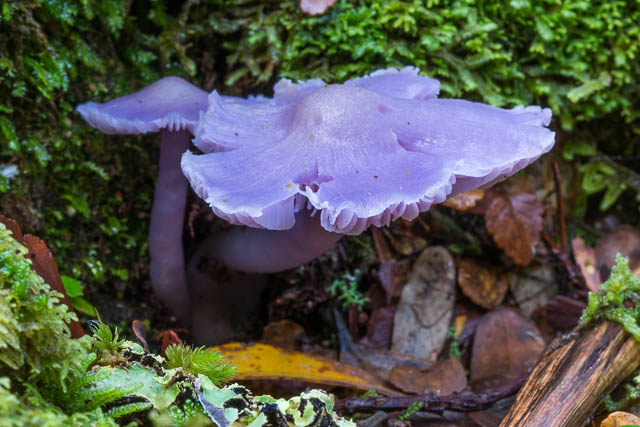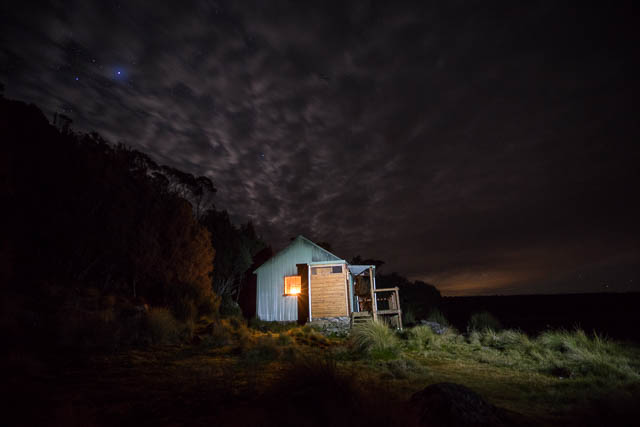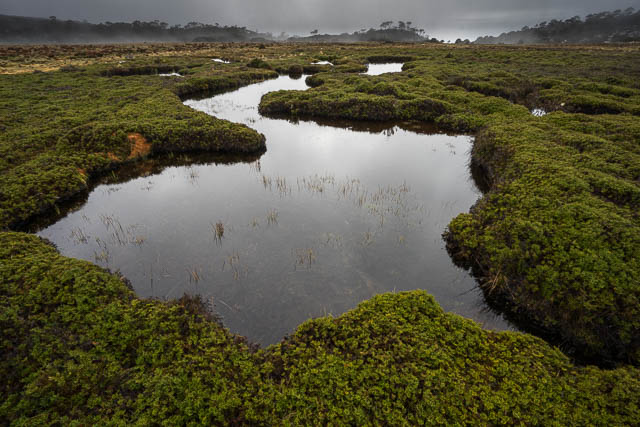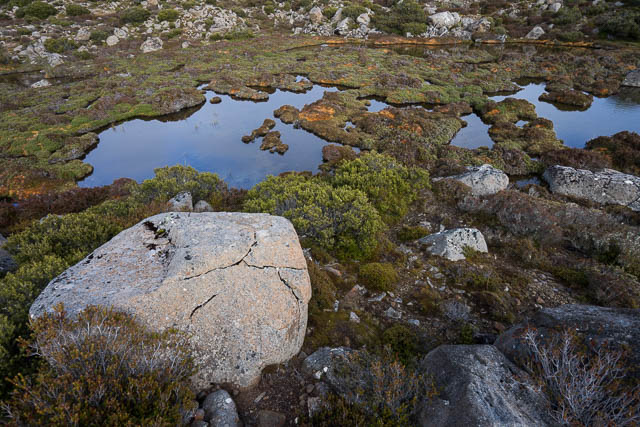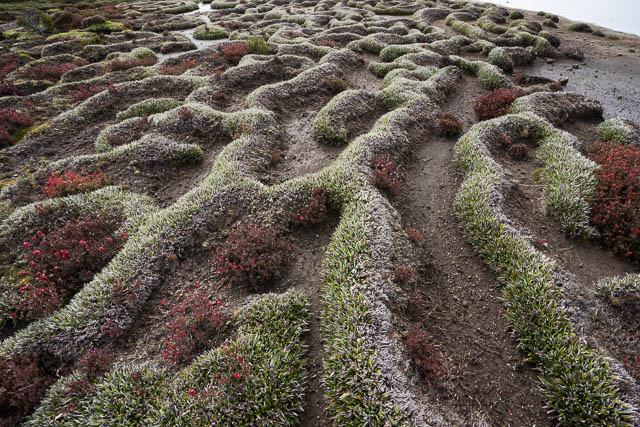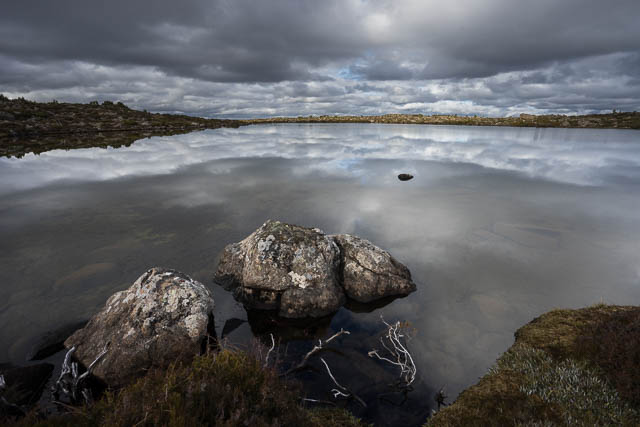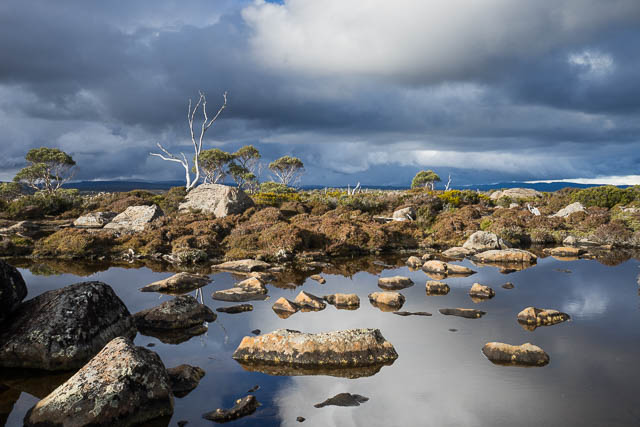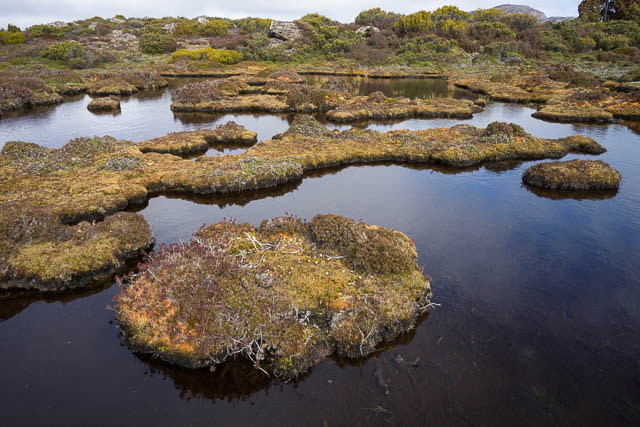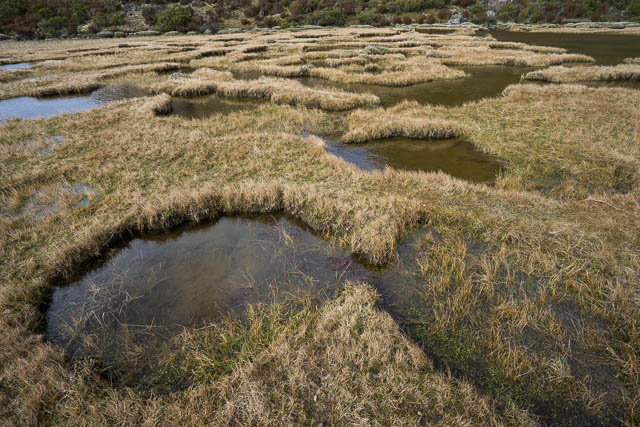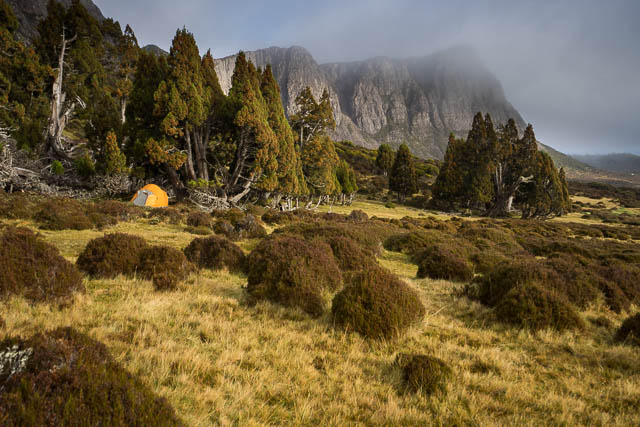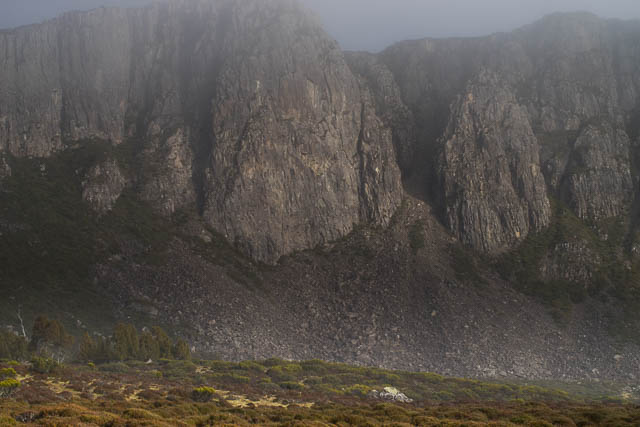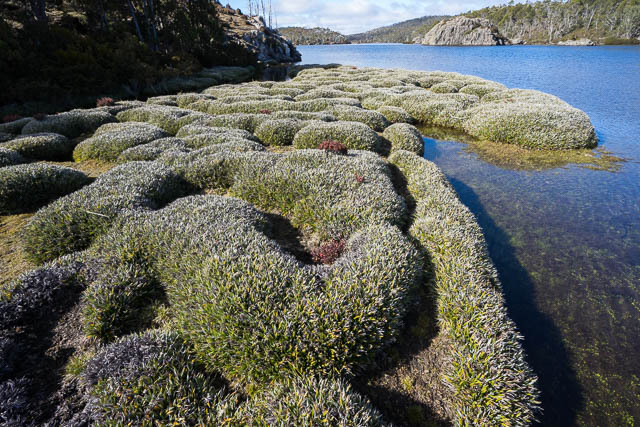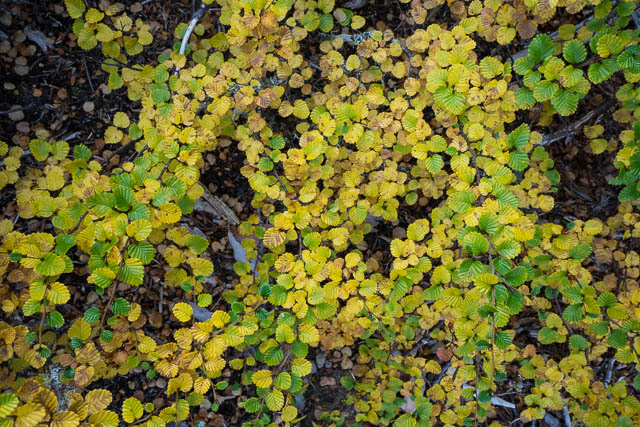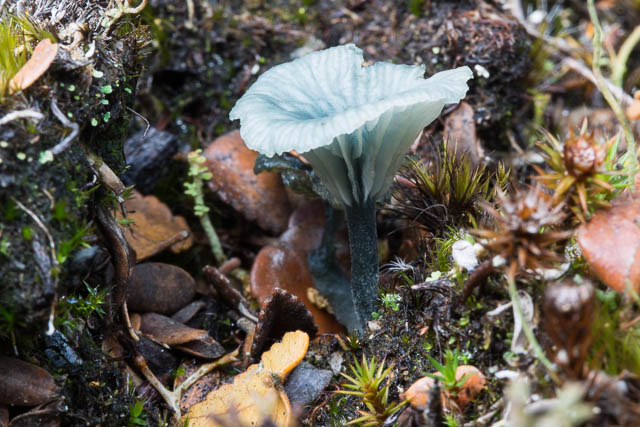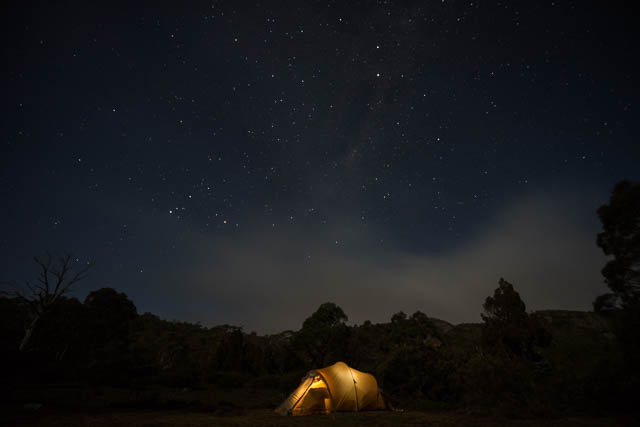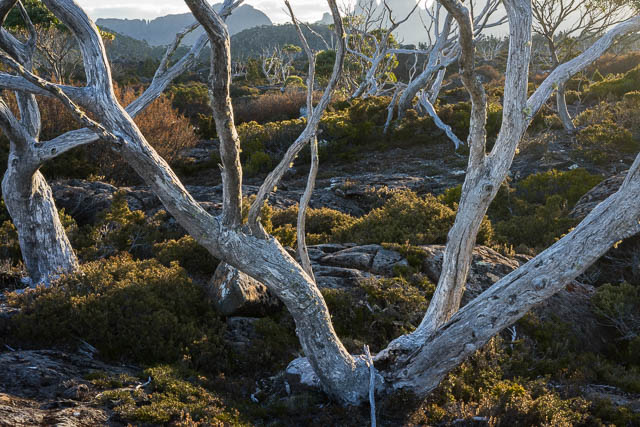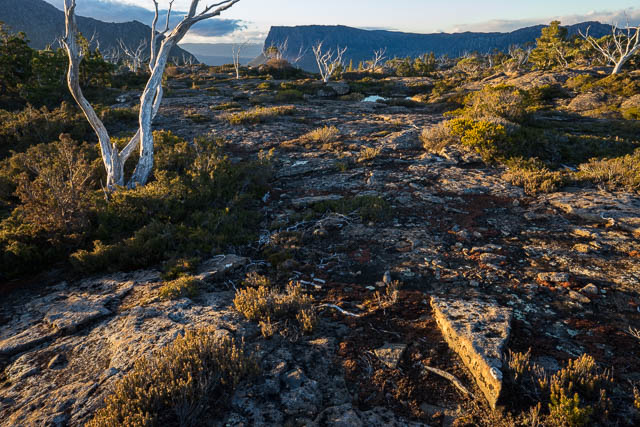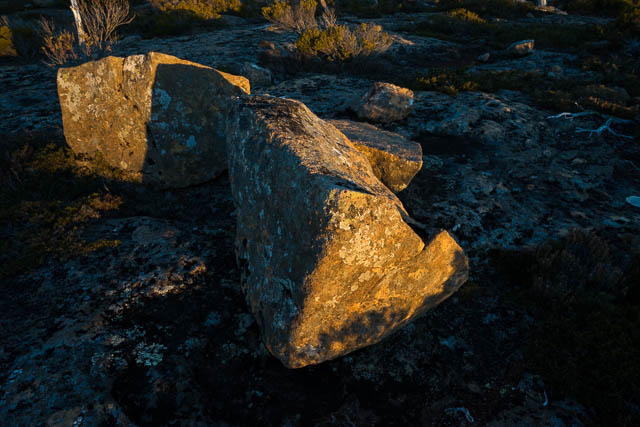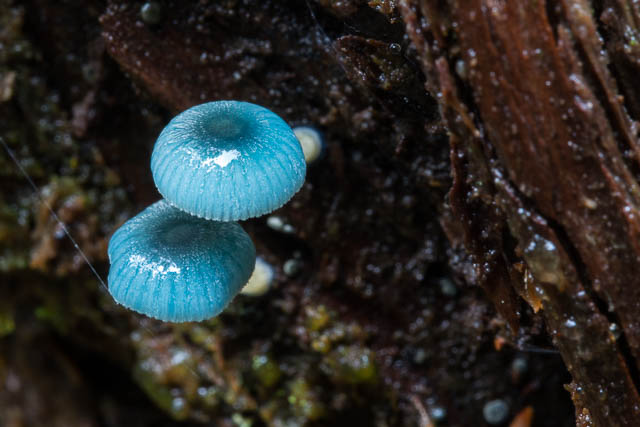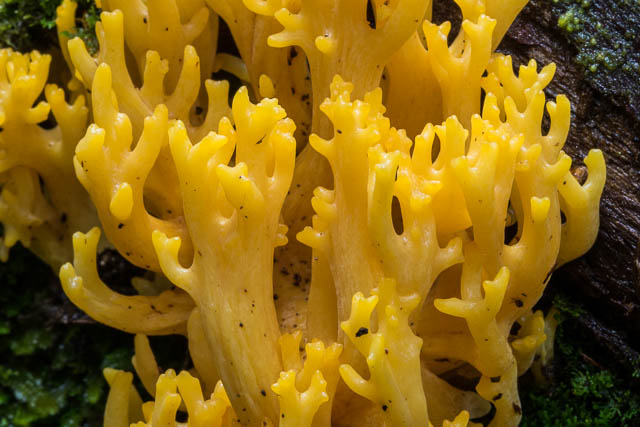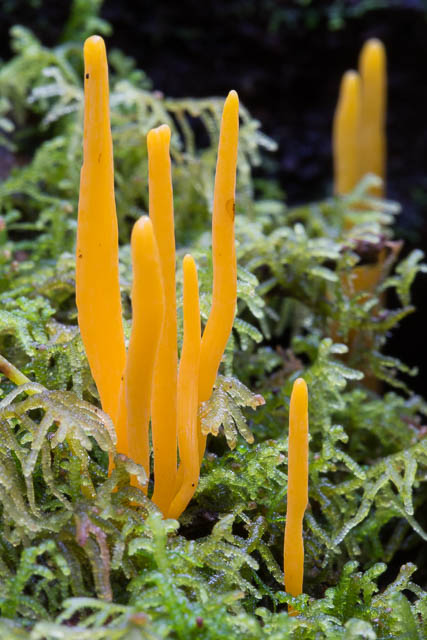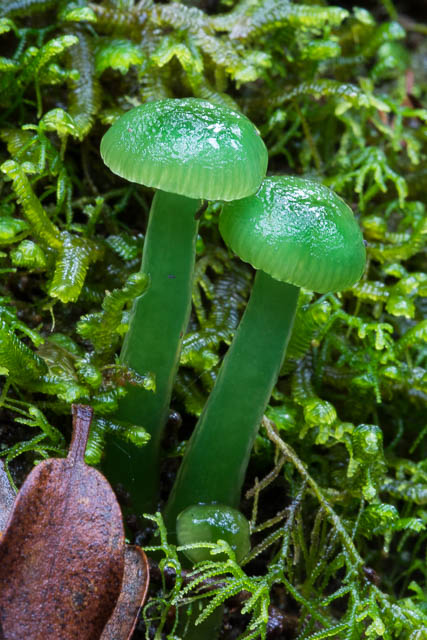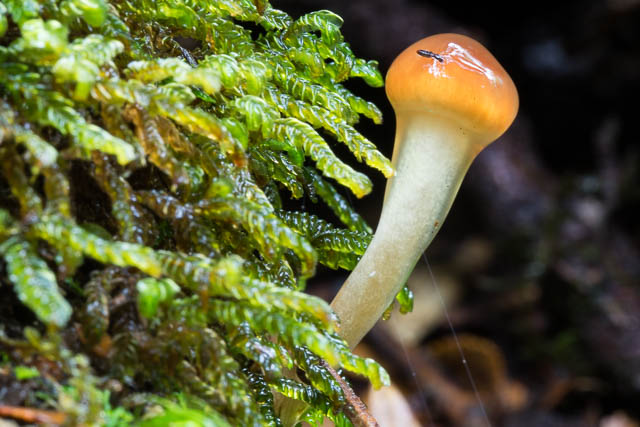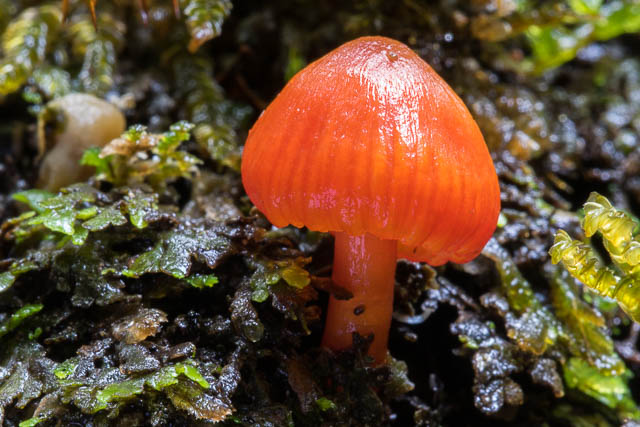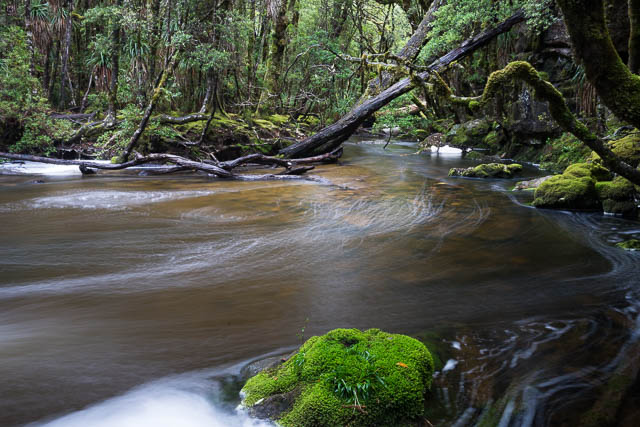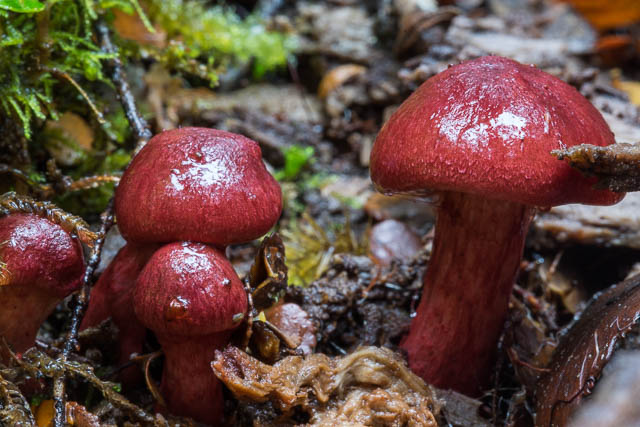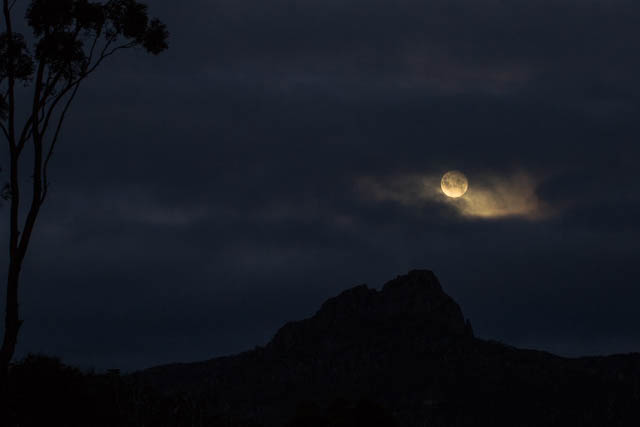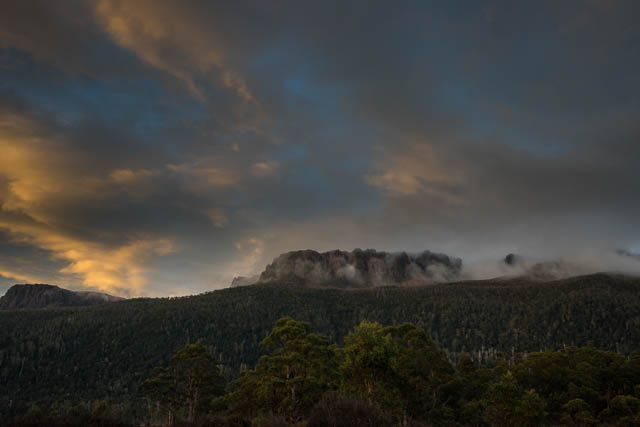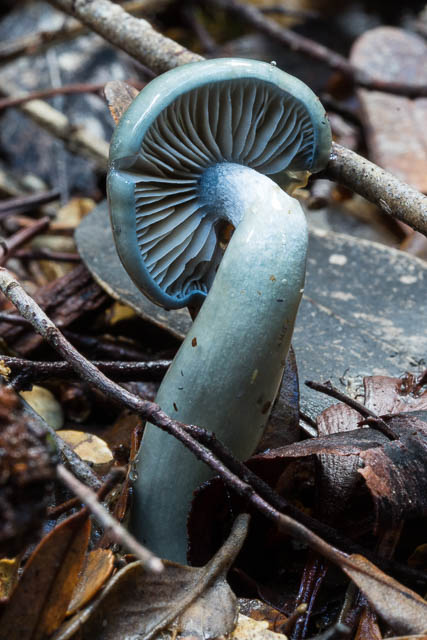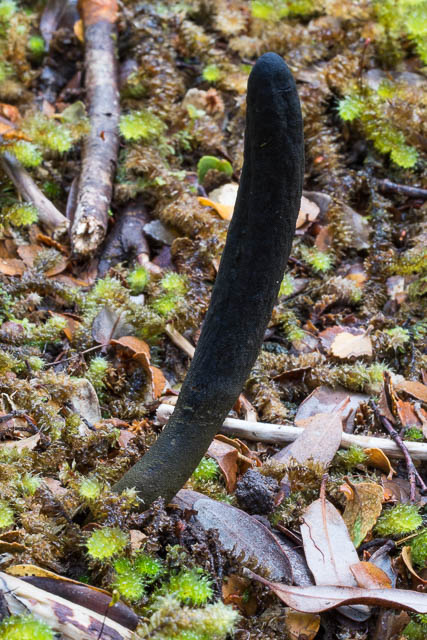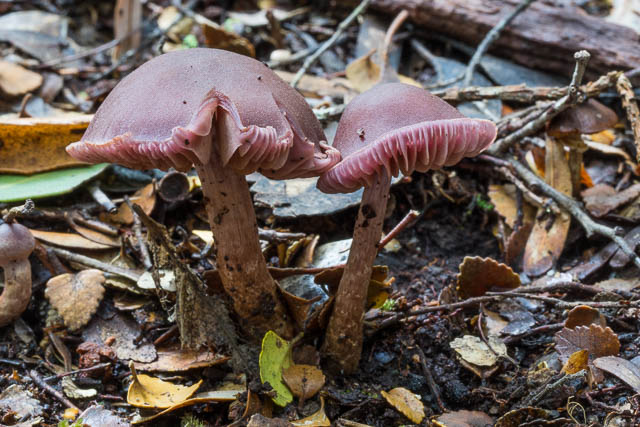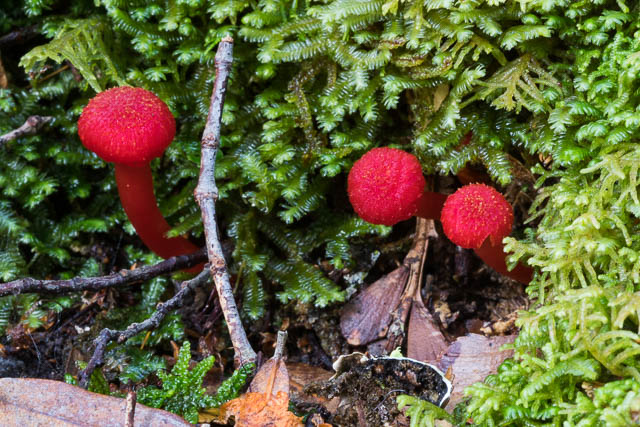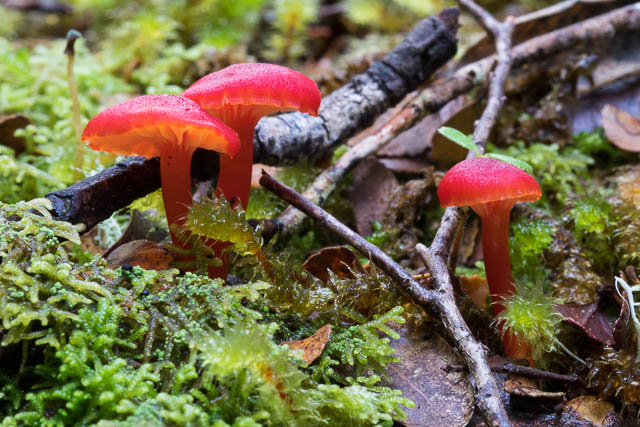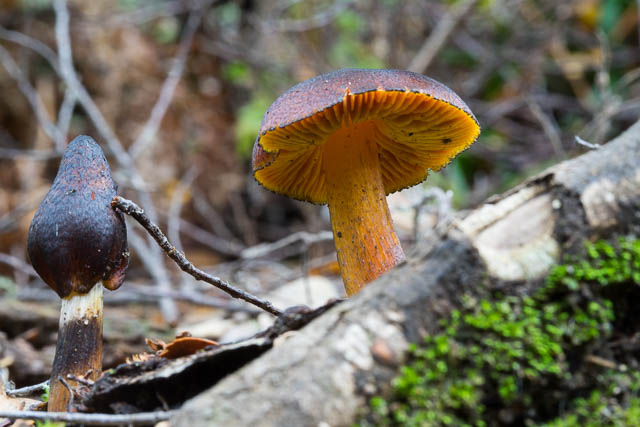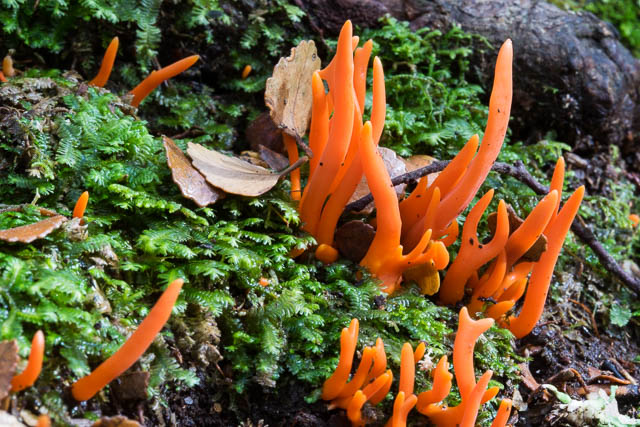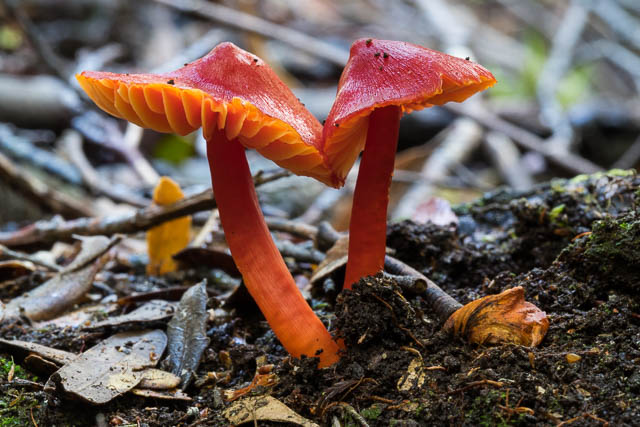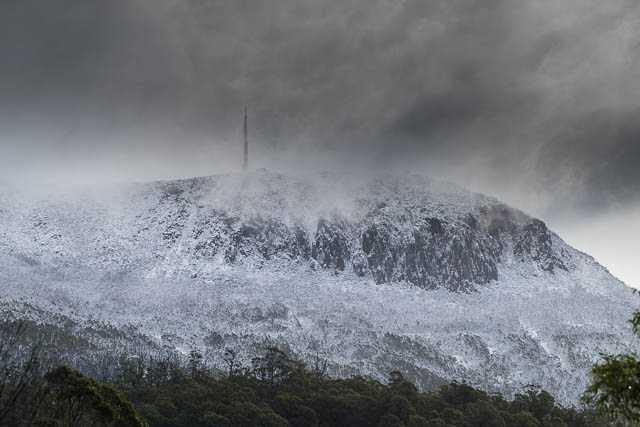This was planned to be another “Fagus and Fungi Walk” in the wilds of Tasmania. Last year, a little earlier in April than this trip, I visited Tasmania and completed the Overland Track with an extended visit to Pine Valley. On that occasion there was plenty of fungi out, but it was an unusually late season for the leaves of the fagus to change colour – the native deciduous beech (Northofagus gunnii). A rough rule of thumb is that the fagus is best around Anzac Day (25 April). This season, as it turned out – the fagus was early and we missed the best of the fagus in the high alpine areas.
My last few trips to the Central Plateau have been solo trips or around 12 days duration. This time, Roger Lembit invited me to join him on his trip. He was planning to start at Higgs Track near Deloraine and finish at Lake St Clair. I and originally thought of doing a trip in the southern Reserve (Cradle Mountain – Lake St Clair National Park), but Roger’s trip sounded good and I welcomed his company. He also did not mind me having a few photo stops.
Our plan was to fly into Hobart, then the next day, bus to Deloraine via Launceston and then a taxi to the start of Higgs Track. Our return to Hobart would be by bus from Cynthia Bay at the south end of Lake St Clair, and in the cooler months the time table is restricted a bit – which meant we could either do a 12 day or a 14 day walk. We ended up carrying 14 days food in case there was a nice spell of weather near the end of the trip and we may want to stay out an extra day or two.
The start of the walk went well. A long bus trip to Deloraine and then a $70 taxi fare to the track. This fixed fare has stayed the same now for a few years. Then on with the big packs and we began the climb up Higgs Track. The ascent is not too bad. The track is in good condition (and a new bridge!) and well marked. The gradient is not too steep, it is sheltered in the forest until almost the top, it crosses plenty of small water-courses where you can slake your thirst and at the top is a nice hut. We spent the first night at that hut at Lady Lake.
Outside the hut are some very nice small pools – they form what is called a “patterned peat bog”. The pools are “flarks” and the thin bits of land between them are “strings”. After my last visit to the Central Plateau I looked up these technical terms.
The weather forecast was not the best for the first few days of our walk, and as it turned out it rained a bit overnight and we woke to mist and drizzle. We slept in a bit and had a late start – only walking a short way on the second day to Lake Nameless. There we sheltered in another hut near Forty Lakes Peak.
The weather improved on the third day. Early mist cleared to a generally fine but cool day. It was a glorious day for walking,and what magnificent country to walk through. Higgs Track ends at Forty Lakes Peak, and from there you need to find your own way. This is easy with he help of a map and compass. The easiest route is often not the shortest. You need to work your way through a labyrinth of lakes and small hills. What vegetation there is is low and scattered. In places there are thickets of scrub, but these can usually be walked around.
There is much to see and it is truly enchanting country. Plenty of cushion plants, lakes in all shapes and sizes, sphagnum bogs, groves of pencil pines and the occasional unusual feature like the Rim Lakes.
We made good progress, and reached Lake Gwendy for lunch and then cruised past Pencil Pine Tarn and the Long Tarns and then found a nice campsite.
It was more of the same the next day. We passed Lake Nutting and Lake Tyre and now were close to the Walls of Jerusalem. More nice cushion plants and more flarks and strings. We reached the track near Mt Jerusalem and sheltered out of a cool breeze in the hut at Dixons Kingdom. After our break, we continued on through the large pencil pine forest into the central valley of the Walls of Jerusalem.
The Parks and Wildlife Service plan to eventually phase out camping in the central valley. But at present it only seems to be “discouraged” rather than being banned. We considered this carefully and ddi camp in the valley, but were very careful with our impact. We camped away from the track and the delicate lakes.
We spent day five at the Walls – doing a few short side trips and just enjoying the beautiful scenery of this special location. It is not a place to rush through.
Roger’s original intention was to traverse the Chinamen Plains and Mountains of Jupiter for the net bit of the trip. But the weather forecast was not that good, and our packs were still quite heavy, so it was not too hard to code the easier route via Lake Ball, Lake Adelaide, Lake Meston and then to Junction Lake. Also – this route is lower and any fagus we encountered may still be in its autumn colour. As it turned out, the weather was not too bad, and he fagus near the lakes was quite good. It was just in the process of changing colour.
Our sixth day was spent walking past Lake Ball and then down to Lake Adelaide, along it and then to Lake Meston to camp. That evening was our first clear night of the trip and I was keen to look for any auroras. But an almost full moon meant that they sky would only be really dark well after midnight. I ended getting up at 2 am and took a few photos of the milky way – but no aurora.
Day seven saw us back on the track down to Junction Lake and then we crossed the Mersey River and climbed the faint track to Lake Artemis in the Traveller Range. We camped at a nice campsite on a peninsula at the lake. Like many of the lakes in the area – it is rimmed by Pencil Pines. The pines all had an orange colour – they were fruiting – apparently this only happens once every seven years.
More fine but cool breezy weather the next day. This was good as it was perhaps the best scenery day of the walk – across the Traveller Range. We didn’t have to walk too far as we planned another high camp on the range close to Du Cane Gap. The area is a bit scrubbier and is more complex to traverse. The track we had been following ends a short way after Lake Artemis and then we had to find our own route once more. This is bushwalking at its finest.
Our campsite that night was also very fine. High on the Traveller Range – but sheltered is a slight valley. Easy to climb up onto the rocky areas for magnificent views. Our vista included Barn Bluff (both of them), Cathedral Mountain, Mt Ragoona, the high peaks of the Du Cane Range and Mt Olympus and the spire of Mt Ida in the south.
Next morning was misty. But the mist soon cleared to a fine day. An hour or so of walking took us to just above Du Cane Gap where we picked up a very rough track that descends to join the Overland Track. The a brisk walk to Windy Ridge for lunch and then more track walking to Pine Valley.
Compared to my visit the previous year, Pine Valley Hut was very quiet. Only two other walkers staying and a couple camped outside. The next morning was day ten and it was quite wet. The fungi outside was quite good – but rain made photography very trying. By that night the other walkers had both left and we had the hut to ourselves. Day eleven was better weather. Dull and cloudy but not much rain. I pottered around, not too far from the hut with my camera and tripod – photographing the amazing colourful fungi and Cephissus Creek.
Roger climbed up to the Acropolis Plateau and obtained a detailed weather forecast on his mobile phone. It was not a very good forecast. The outlook was heavy rain and then snow – for many days ahead. Over lunch, we decided that a quick walk out may be wise. So we shortened the walk to 12 days. That afternoon was walked to Narcissus Hut at the north end of lake St Clair, and the next day – we walked around the lake to Cynthia Bay at the southern end. Narcissus Hut was in the process of being refurbished. The dining area was closed but we could sue the bunk room. It should be much better when the work is completed. A lady camped outside the hut, with two children, was an interesting local bushwalker. And she certainly was a local – living and working at Derwent Bridge. She recommended the Hungry Wombat Cafe at Derwent Bridge (her place of work!)
I had hoped to spend a bit of time walking around the lake – as the fungi nearby is particularly good. I did manage to get a few photos, and I was lucky as it was not long after we got to Cynthia Bay that it started raining. And it rained heavily all night and the next day. But by then we were sitting in the cafe waiting by the fire for our bus to Hobart. The day before, walking around the lake, I had bumped into fungi photographer par excellence – Steve Axeford (complete with tripod, camera and macro lens), and was able to chat with him and his partner Cathy at the cafe about the fungi we had seen.
Back in Hobart – was when it snowed. Quite spectacular it was too!
A large gallery of photos from the trip are online and can be viewed from this page.

